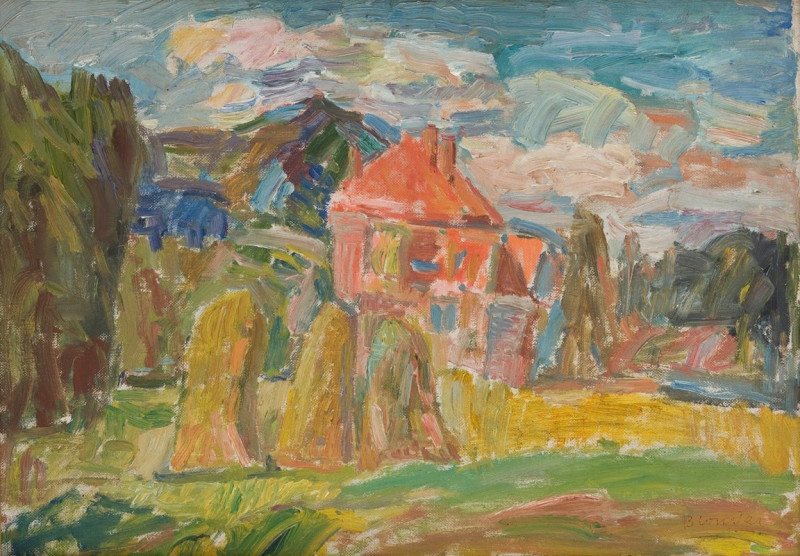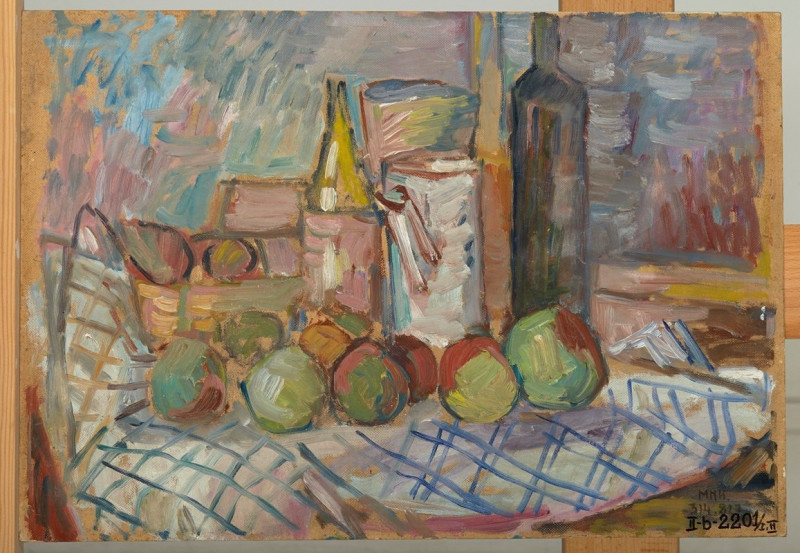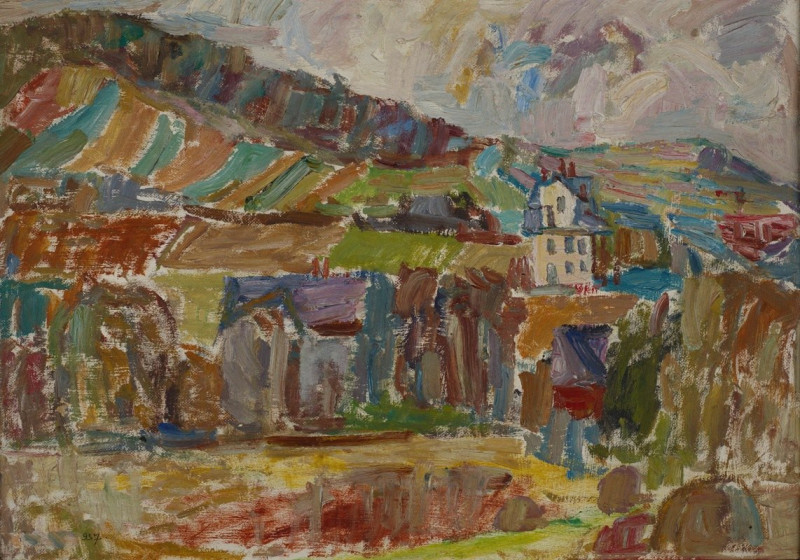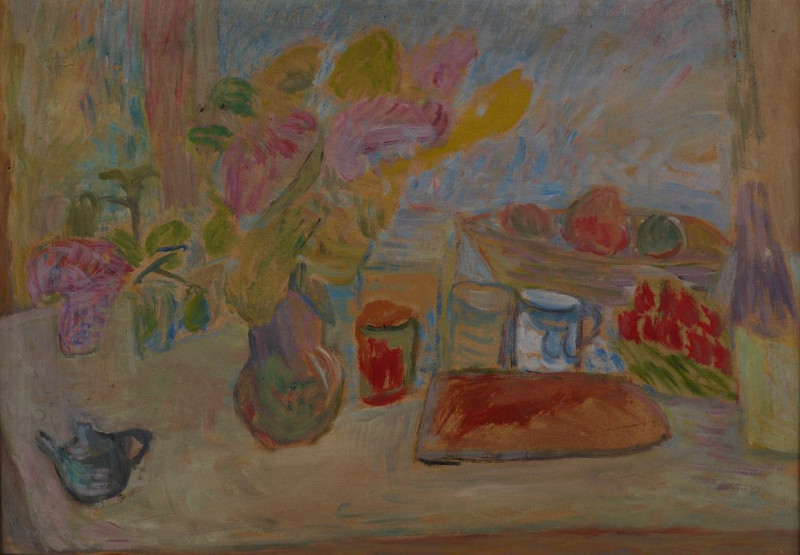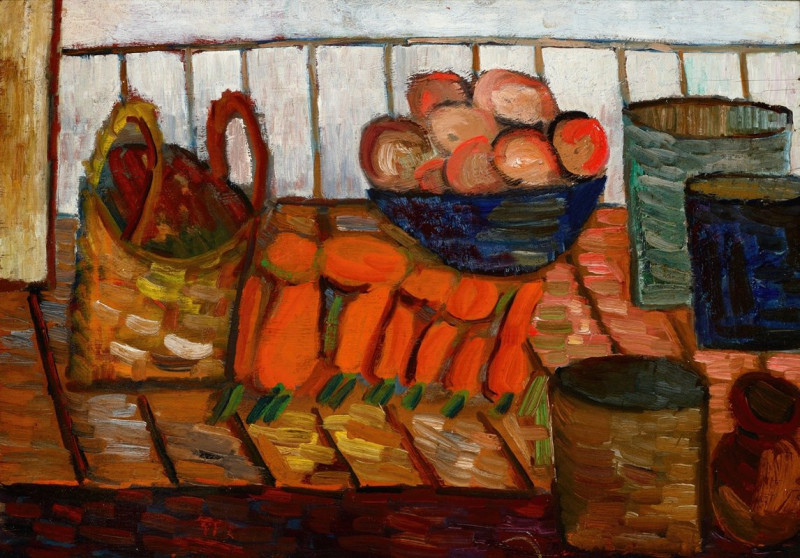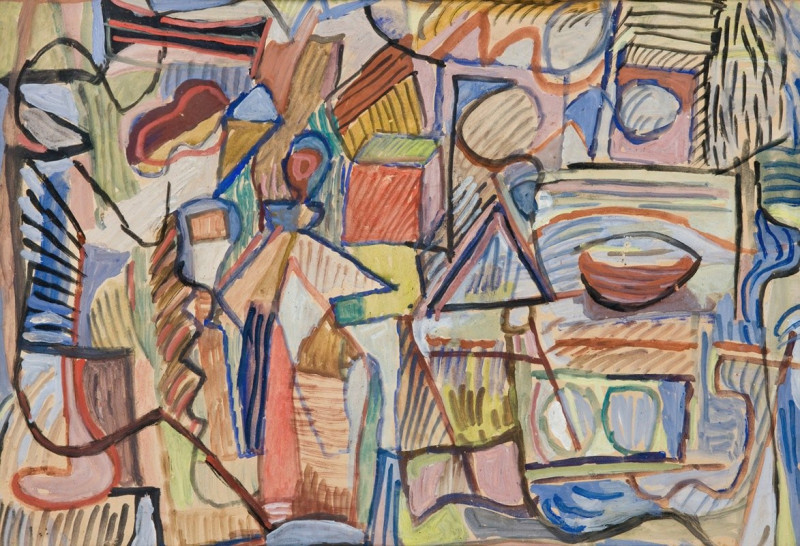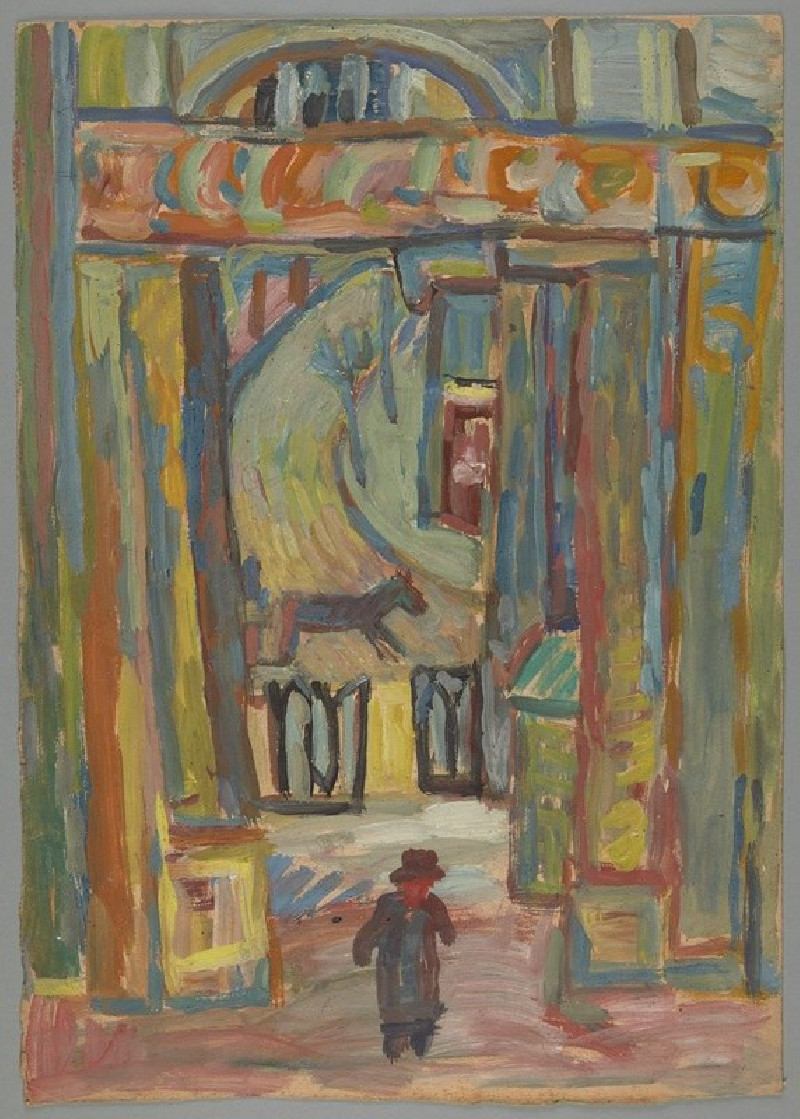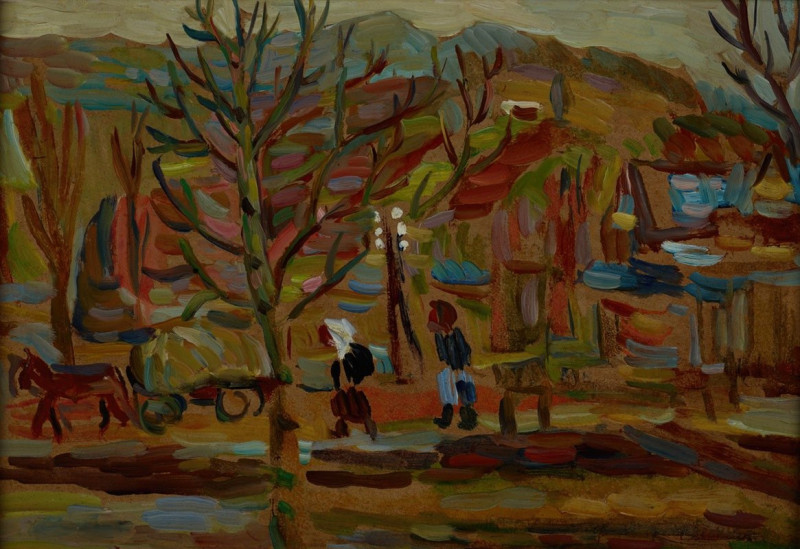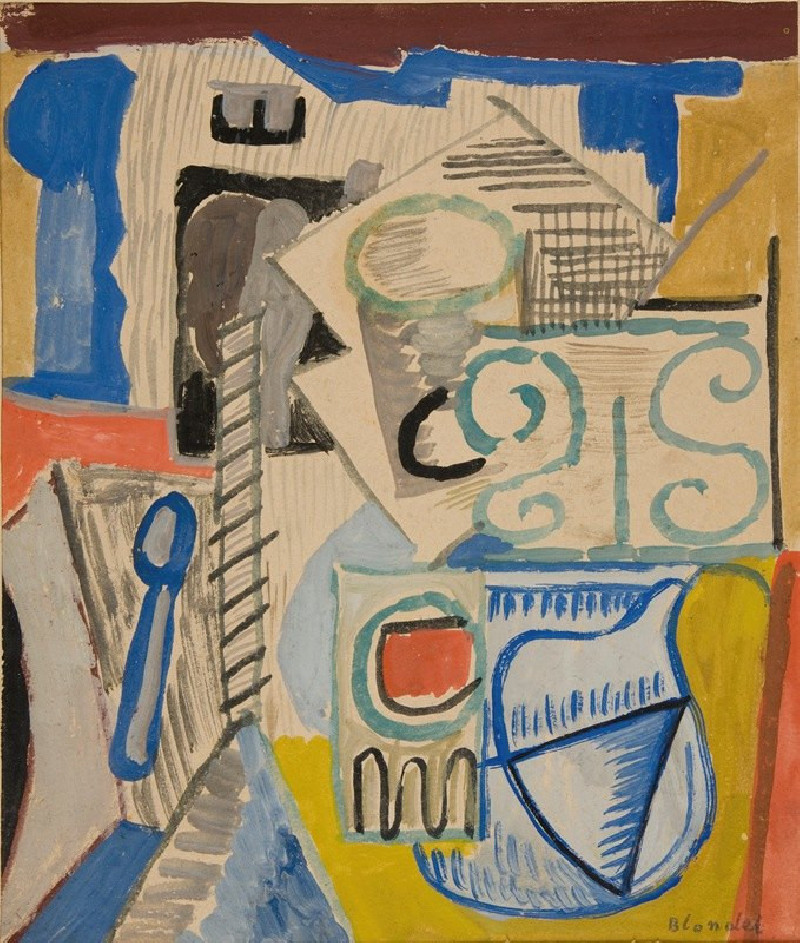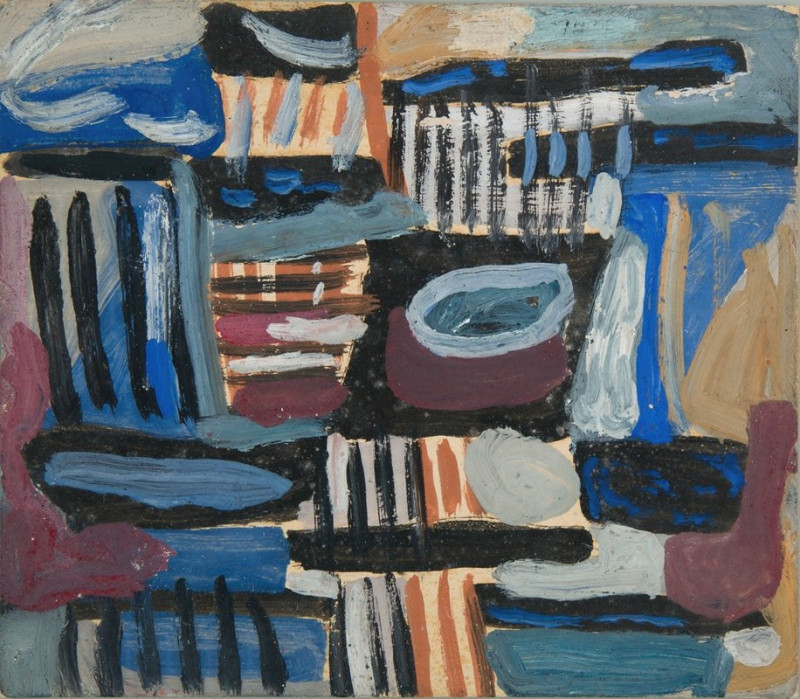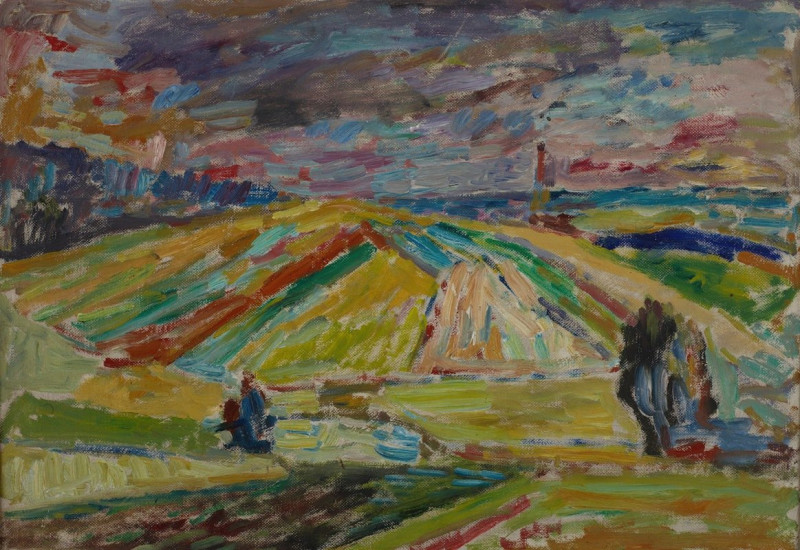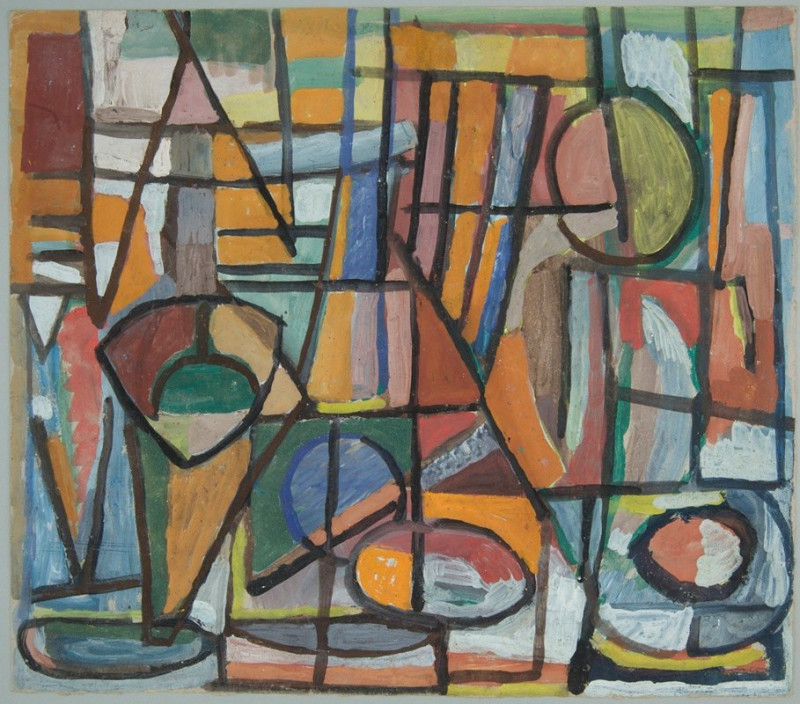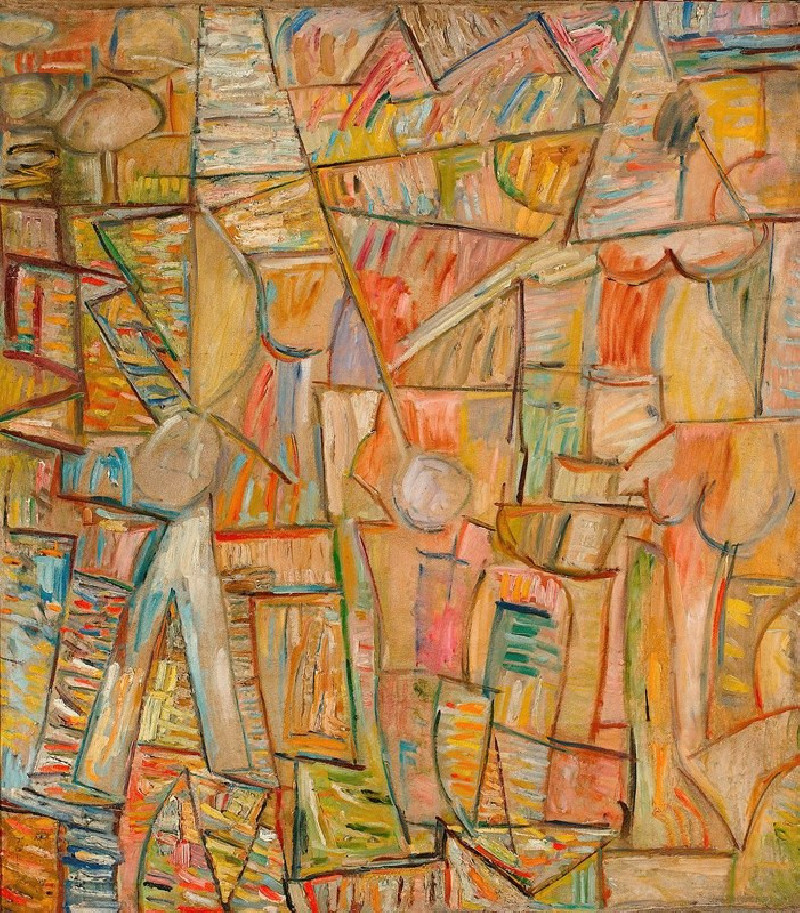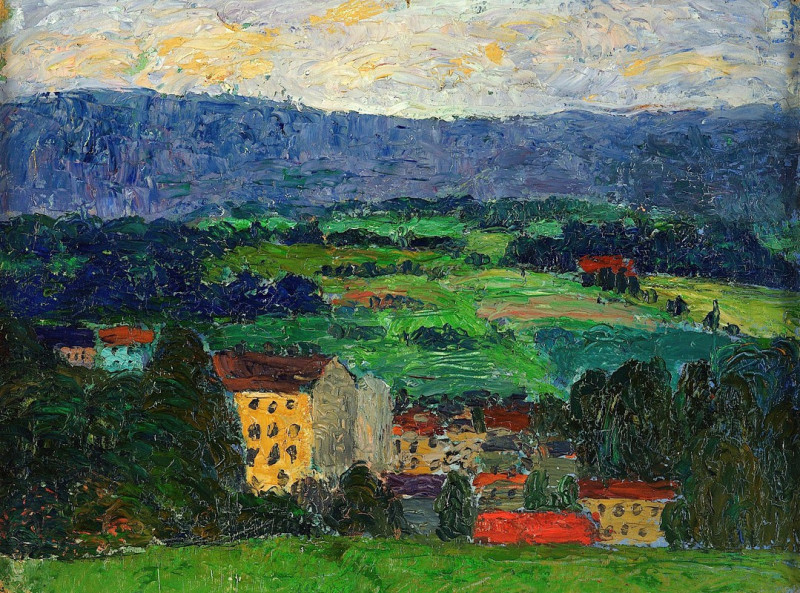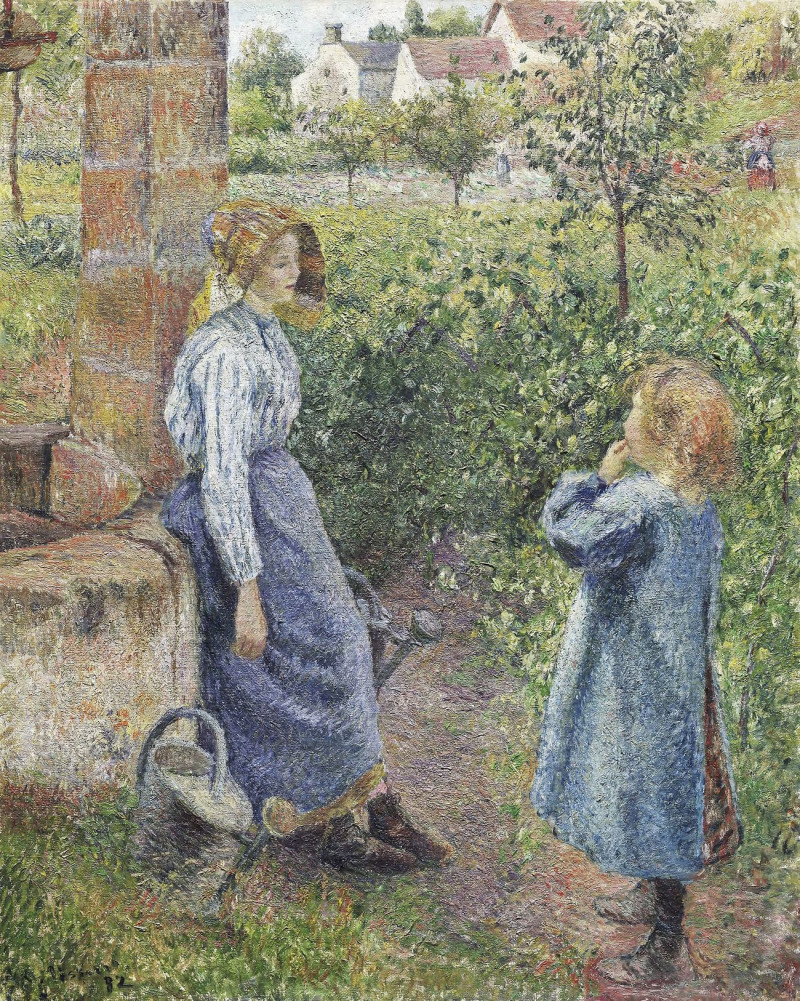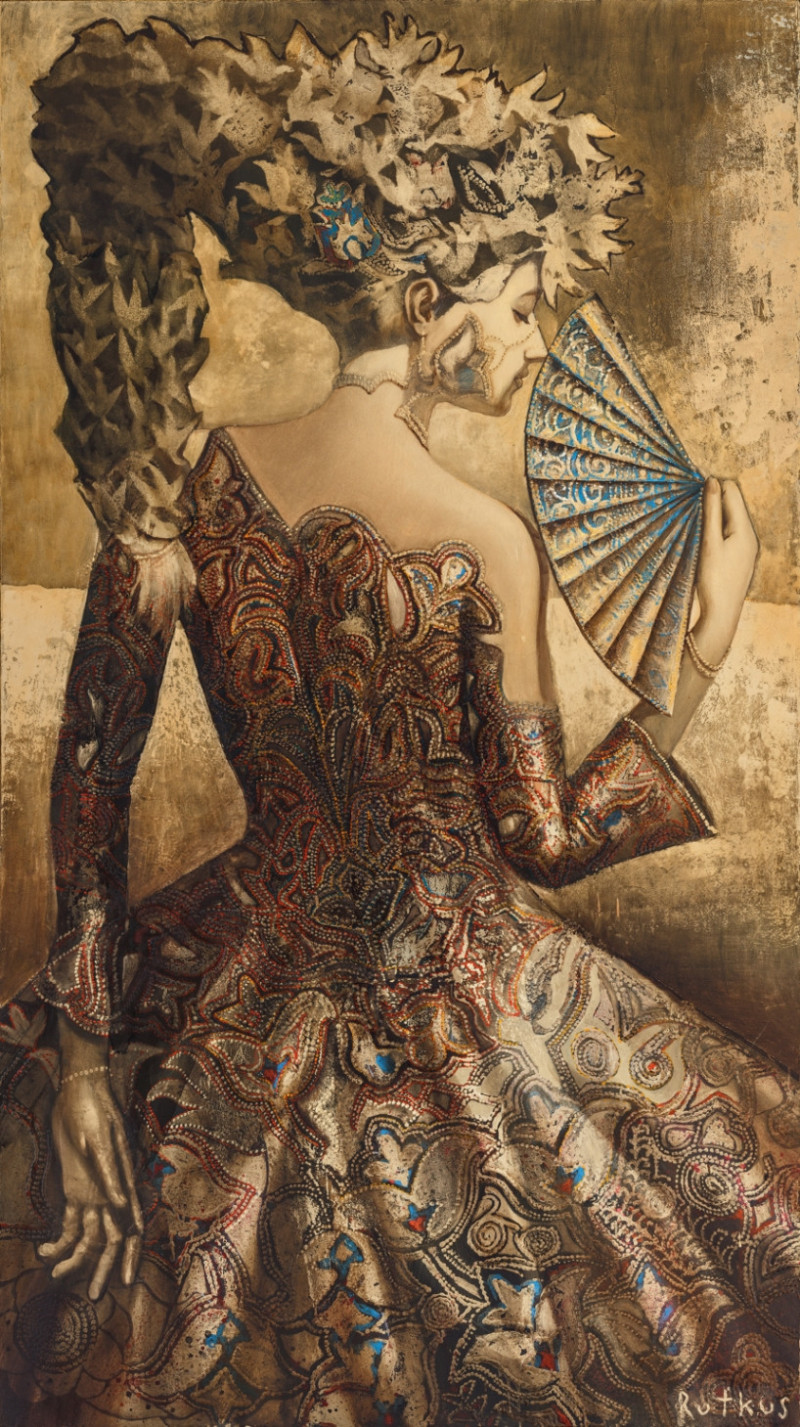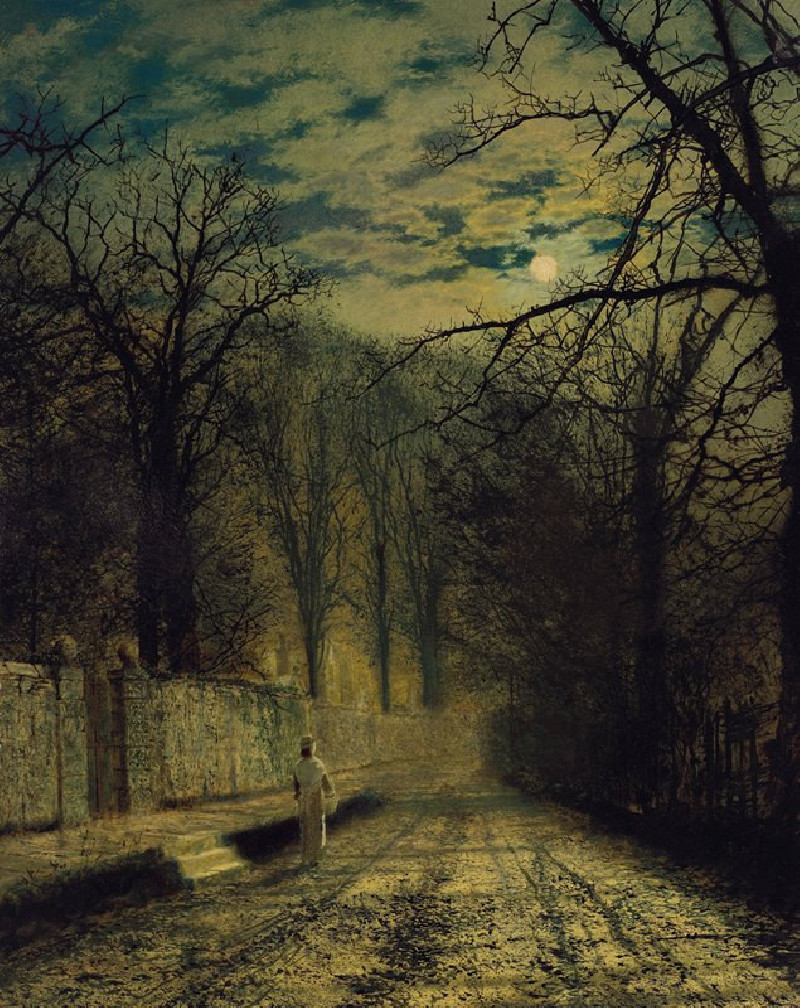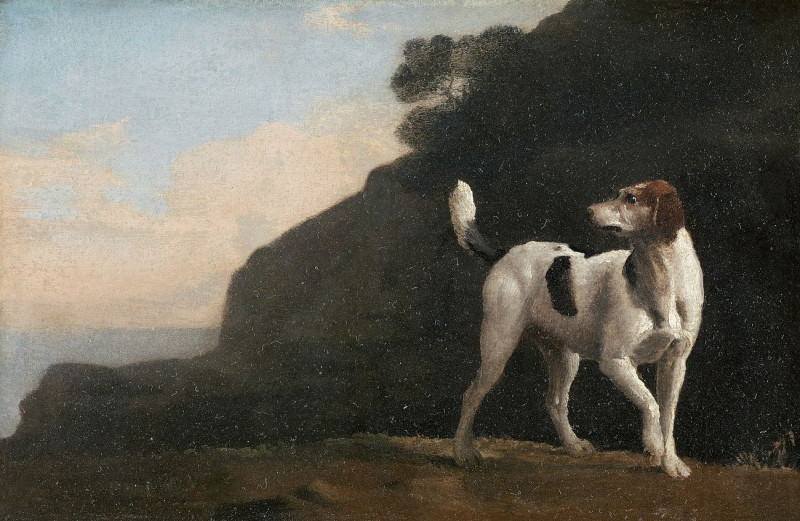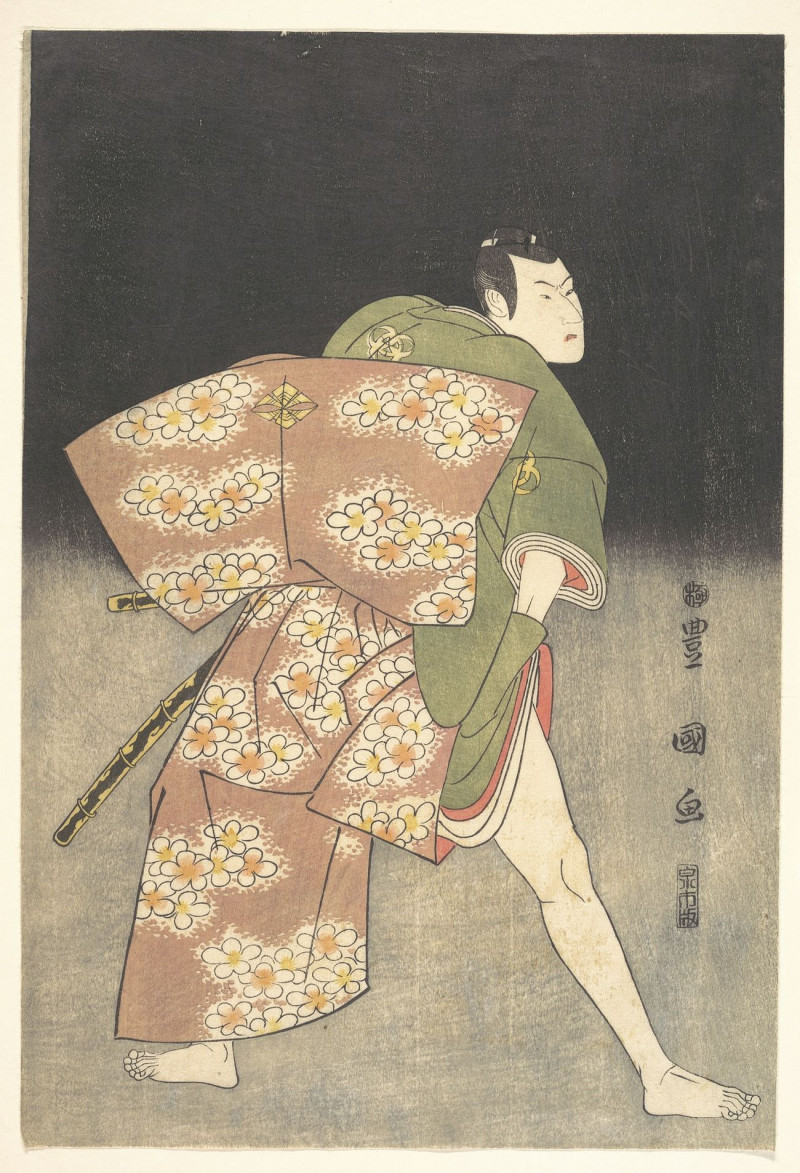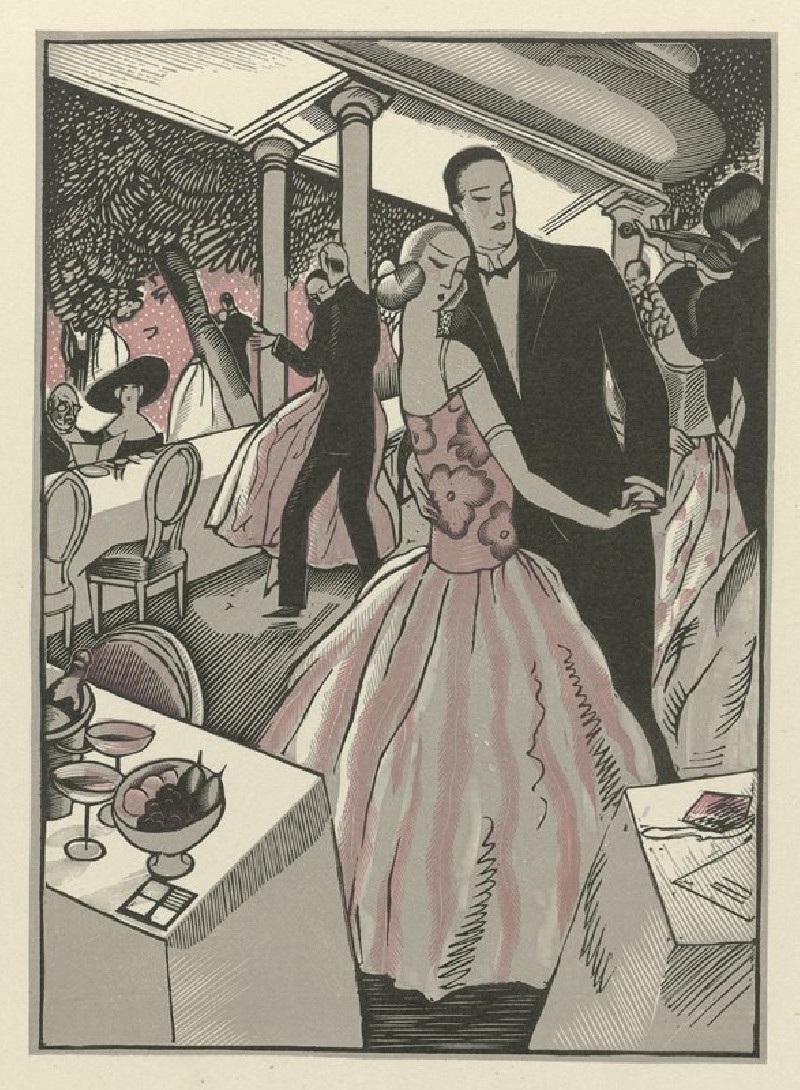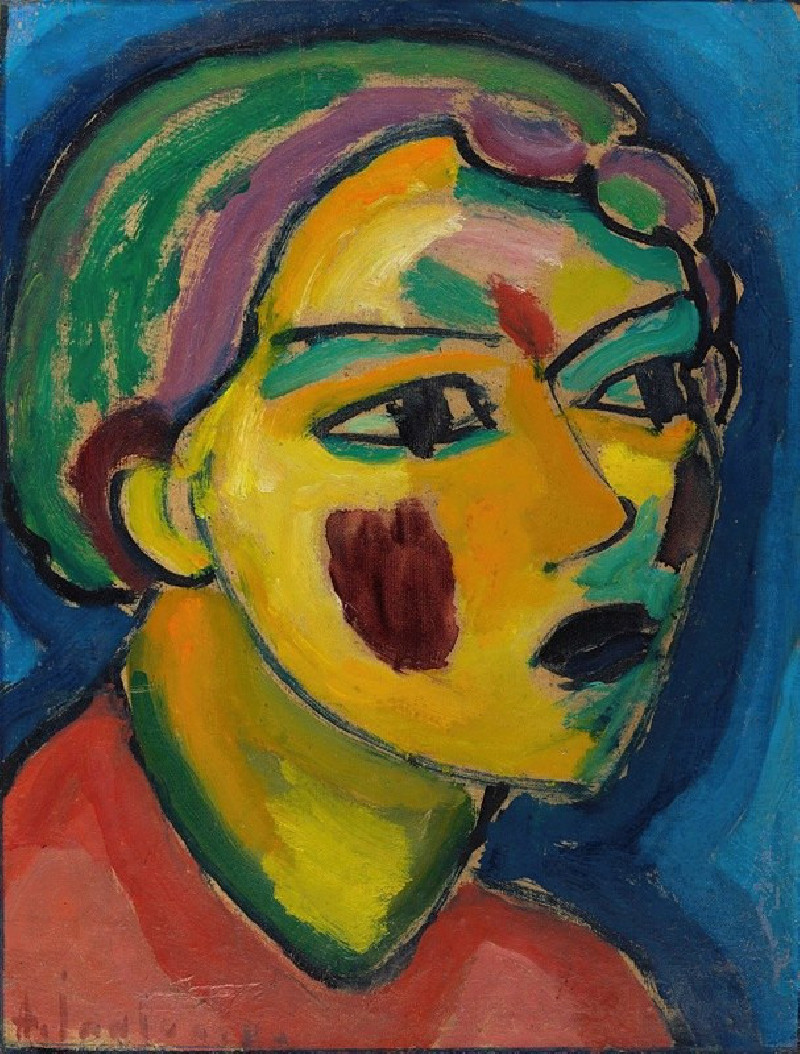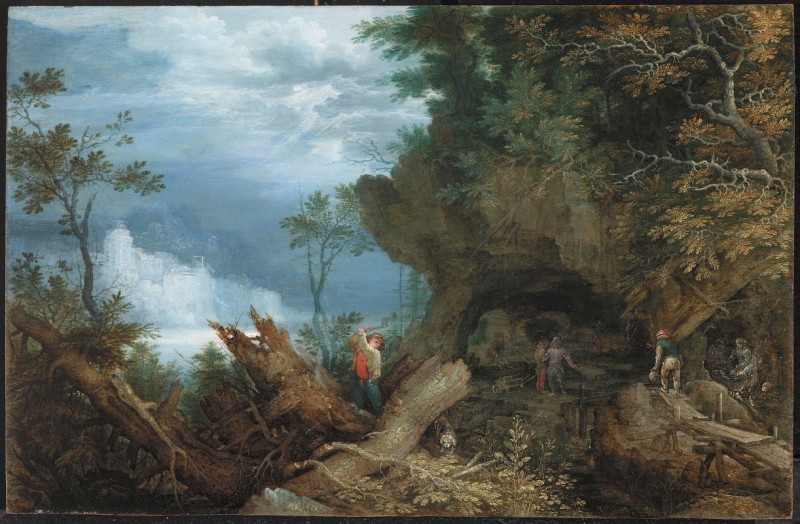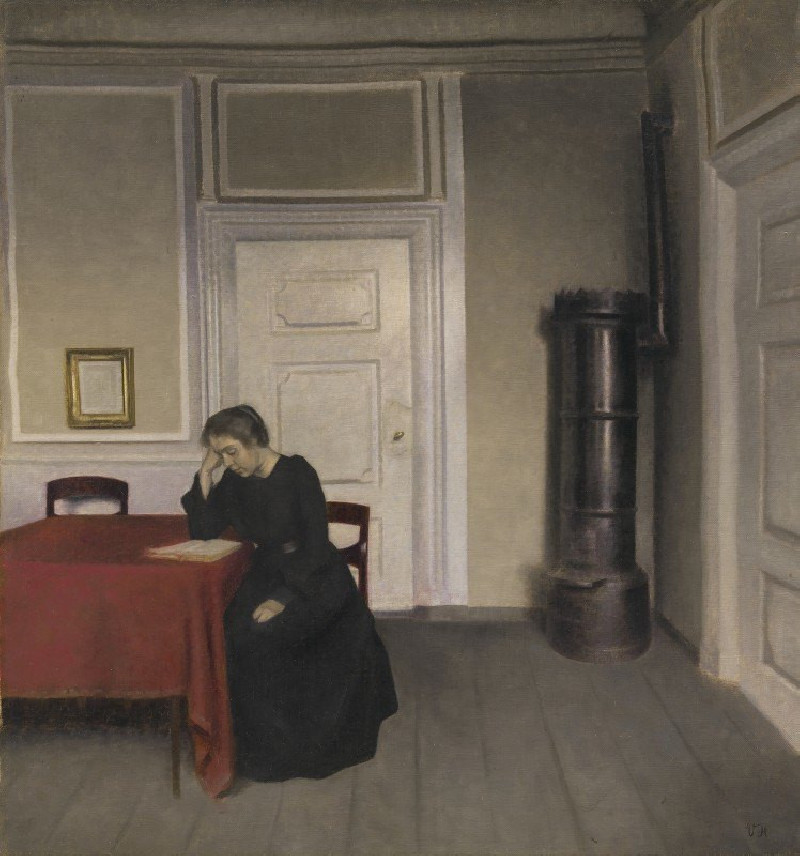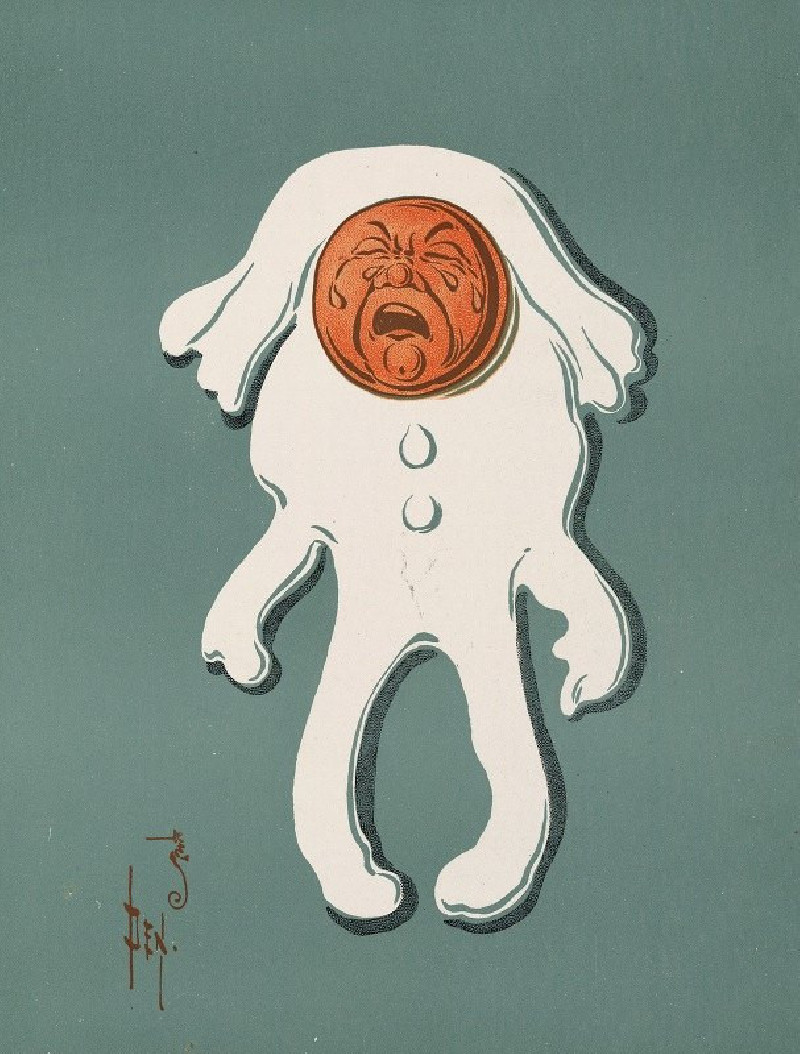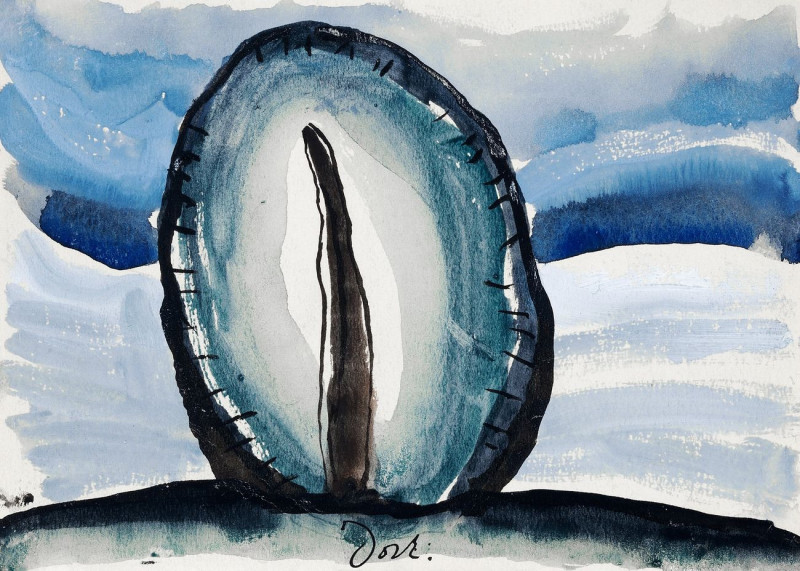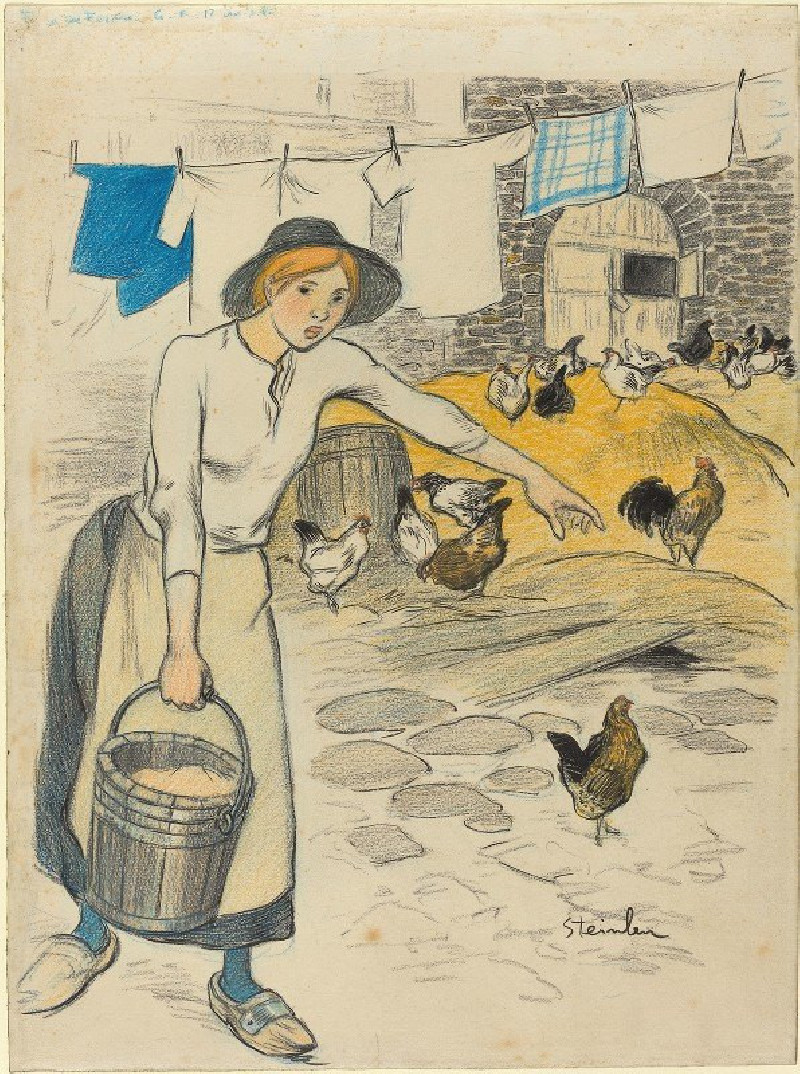Kompozycja abstrakcyjna (1934)
Technique: Giclée quality print
Recommended by our customers
More about this artwork
Explore the fusion of color and form in Sasza Blonder's "Kompozycja abstrakcyjna" (1934). This abstract composition captures the dynamic and experimental spirit of the early 20th-century avant-garde movements, to which Blonder contributed significantly. The painting is a labyrinth of earthy and muted tones – ochres, greens, blues, and browns – interspersed with vivid bursts of red, all bounded by heavily outlined structures.Blonder plays with geometric abstraction, creating a mosaic of shapes that, while disjointed, seem to communicate and connect through their interlocking placements. These forms could be interpreted as elements of a cityscape or fragments of mechanical objects, each piece contributing to a harmonious whole despite the absence of representational clarity."Kompozycja abstrakcyjna" invites viewers to delve into an introspective journey through shapes and colors, encouraging personal interpretations and emotional responses, making it a testament to Blonder's artistic exploration and the timeless allure of abstract art.
Delivery
Returns
Aleksander (Sasza) Blonder was a Polish painter of Jewish origin .
He went to Paris for the first time in 1926. He studied architecture in 1930–1932 at the École nationale supérieure des beaux-arts in Paris and studied painting at the Academy of Fine Arts in Kraków from 1932 to 1936 with Teodor Axentowicz , Władysław Jarocki and Fryderyk Pautsch.



